We sit under a tree in the Lowveld Botanical Garden, watching as the finishing touches are being put onto his display for the Innibos Arts Festival.
Leon has succeeded in bringing a part of his winning exhibit from the Chelsea Show to the Lowveld – the only place outside of England where it can be seen.
This remarkable privilege bestowed upon Mbombela is fitting, as his father was once the curator of the botanical garden.
“I grew up in this garden. We used to go on hikes every weekend and I don’t think there is a trail in the Lowveld we haven’t walked.
“My favourite is Fairy Land close to God’s Window. There is a spectacular array of plants there that most people don’t even know about,” says Leon.
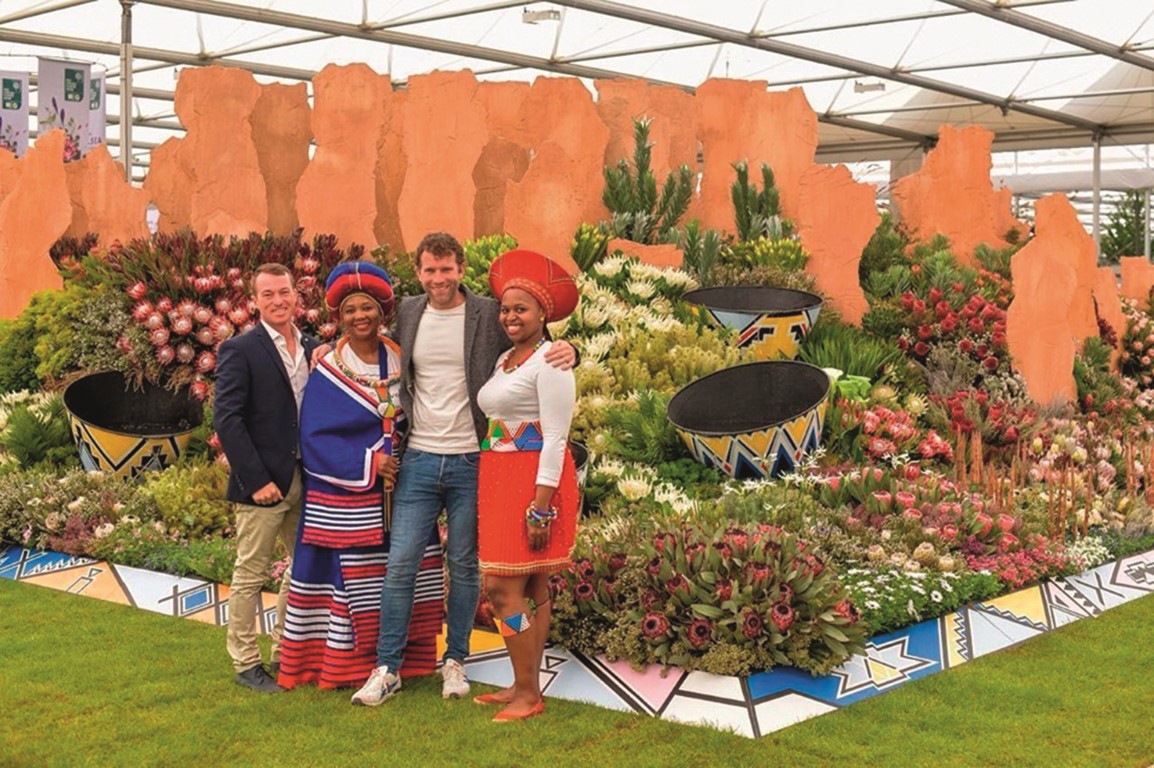
He divulges that staying inspired to create winning exhibitions requires spending as much time in nature as possible.
“You have to hike to find new plants. If you are not big on walking you won’t succeed in creating inspirational landscapes.”
Of inspiration, there is much to be had in South Africa’s rich floral diversity.
As such, the Kirstenbosch National Botanical Garden has won gold at the Chelsea Flower Show an astonishing 37 times, the last six years being through Leon’s leadership.
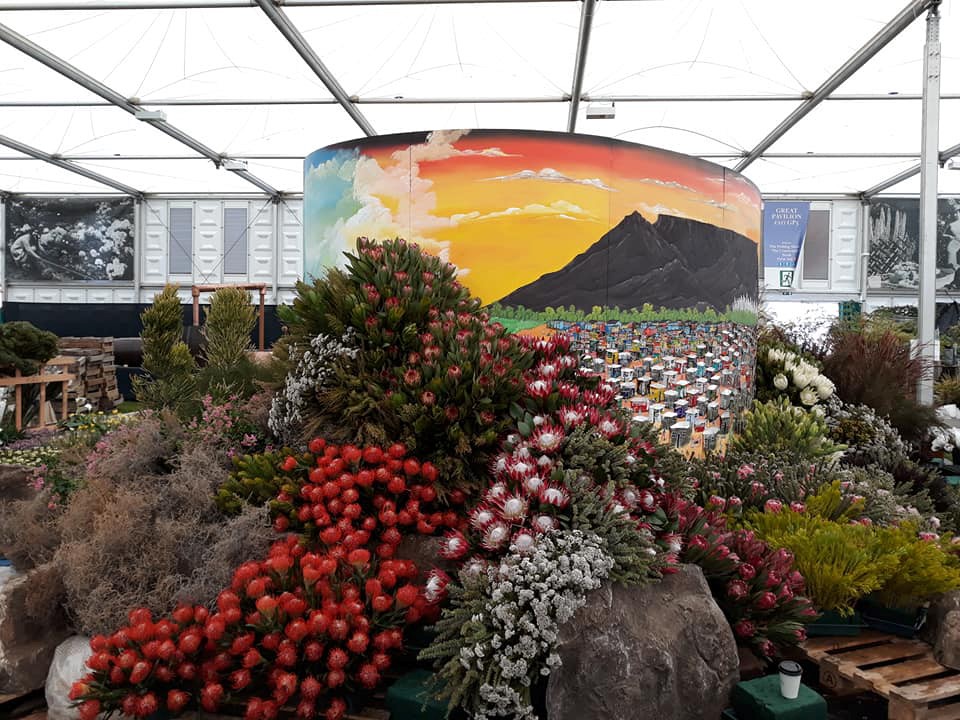
This year’s exhibition was titled “Mountains of Abundance” and featured a cornucopia of proteas, aloes and indigenous grasses.
“Africa always seems to be on the back-burner – but not in this sphere.
“There is only one exhibit representing our whole continent and it is one of the most popular exhibits at the show, and the biggest within the grand marquee. People stand in queues for hours to see our proteas,” Leon proudly states.
As the only person in Africa who does show gardening, Leon carries the continent’s responsibility with gratitude and humility.

“Show gardening is extremely important to the horticultural sector. What the Milan runway does for fashion, gardening shows do for horticulture.
“I love the drama of show gardening and how everything comes together in a wave of colour.
“We set new trends in gardening, introduce new plants and colours, and ultimately convince nurseries to stock new varieties of plants.”
Attaining his position has been a lifelong dream. With green fingers running in the family, Leon’s foray into the horticultural world was inevitable.
“I never dreamt of being a fireman,” he laughs, “my interest was always in plants. Gardening is in my blood.”
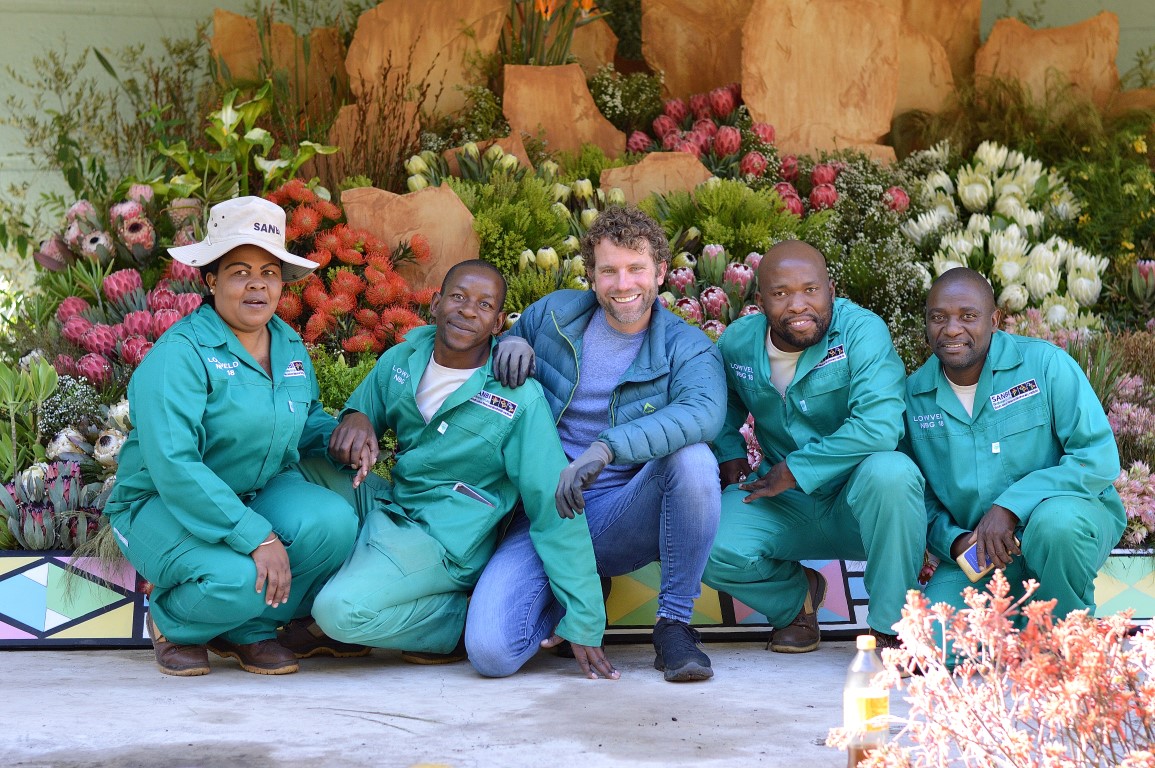
Leon studied landscaping and horticulture and set his sights on show gardening, something which one needs to be invited to do rather than applying for it.
He made his mark and after winning the Gardening World Cup in Japan in 2014, he caught the attention of the show garden community.
Then, after winning the Philadelphia Flower Show, he was invited to be a part of the South African team for the Chelsea Flower Show.
“There is so much to learn when you are putting a show of that magnitude together.
“Logistics are a huge factor in the success of the show as everything needs to be imported and kept alive,” Leon explains.
Everything for the Chelsea Flower Show is flown in from South Africa – from the flowers to the sand. This requires special permits, which can take up to a year to attain.
“One needs a lot of patience for all of the paperwork. Each plant needs its own biography and explanation for the permits.
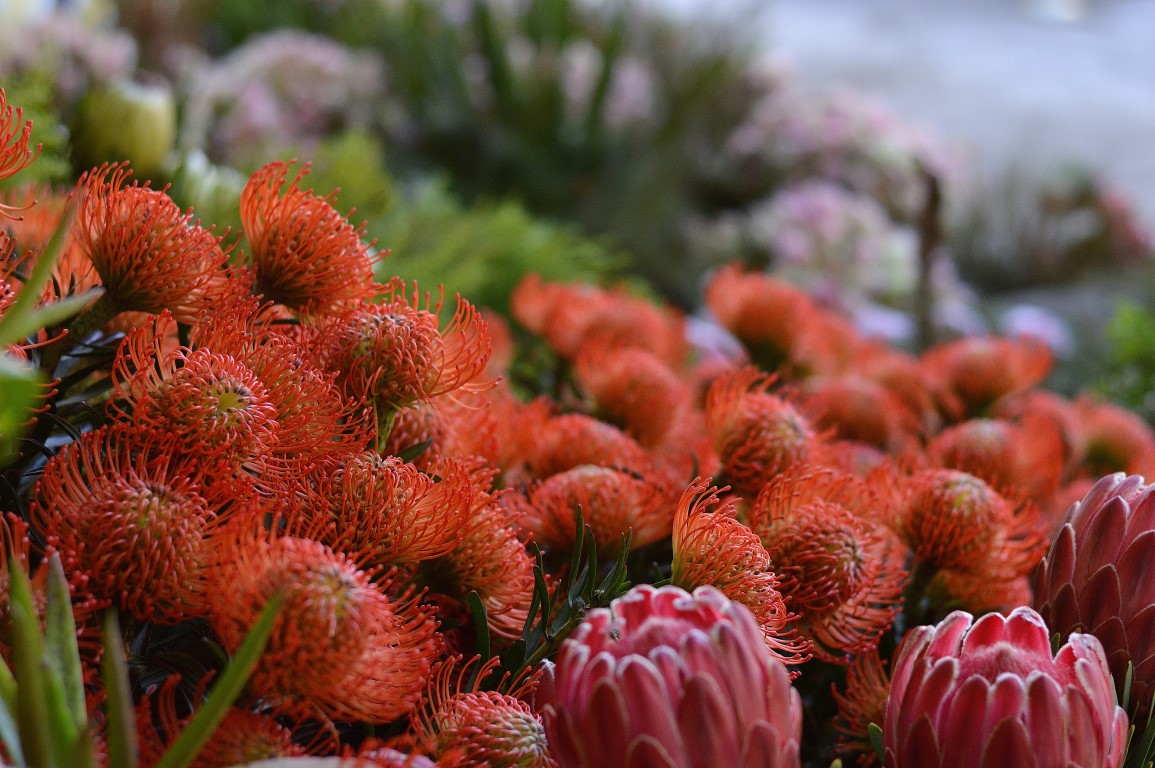
“For plants that are endangered, like many of the aloes, the paperwork is even more laborious. It’s a very stressful process. This year we lost a whole container of plants that was destroyed by customs.”
Since the flowers are flown in a week before the arrangements start, they have to be kept in cold rooms. This limits what flowers can be used, as they have to withstand the cold.
“I often get asked why I don’t use more flowers from Mpumalanga or Limpopo, but most of them would not last in the cold rooms. We test new flowers from outside the Cape because we do want more variety, but most of them don’t make it.
“Furthermore, few flowers are as showy as a protea. Look at that Barberton daisy,” he says, pointing to the delicate red flower on the display.
“It’s beautiful, but it doesn’t make the statement that the king protea next to it does.
“We need to have an explosion of colour and wow factor to win. With our proteas, you can’t miss us!
“They are really remarkable – there is just nothing else like it in the world and many people attending the show have never seen proteas before.
People queue for hours after the show to get just one protea from the installations that are dismantled and sold off.”
The show then of course also has far-reaching benefits for South Africa, from tourism to farming.
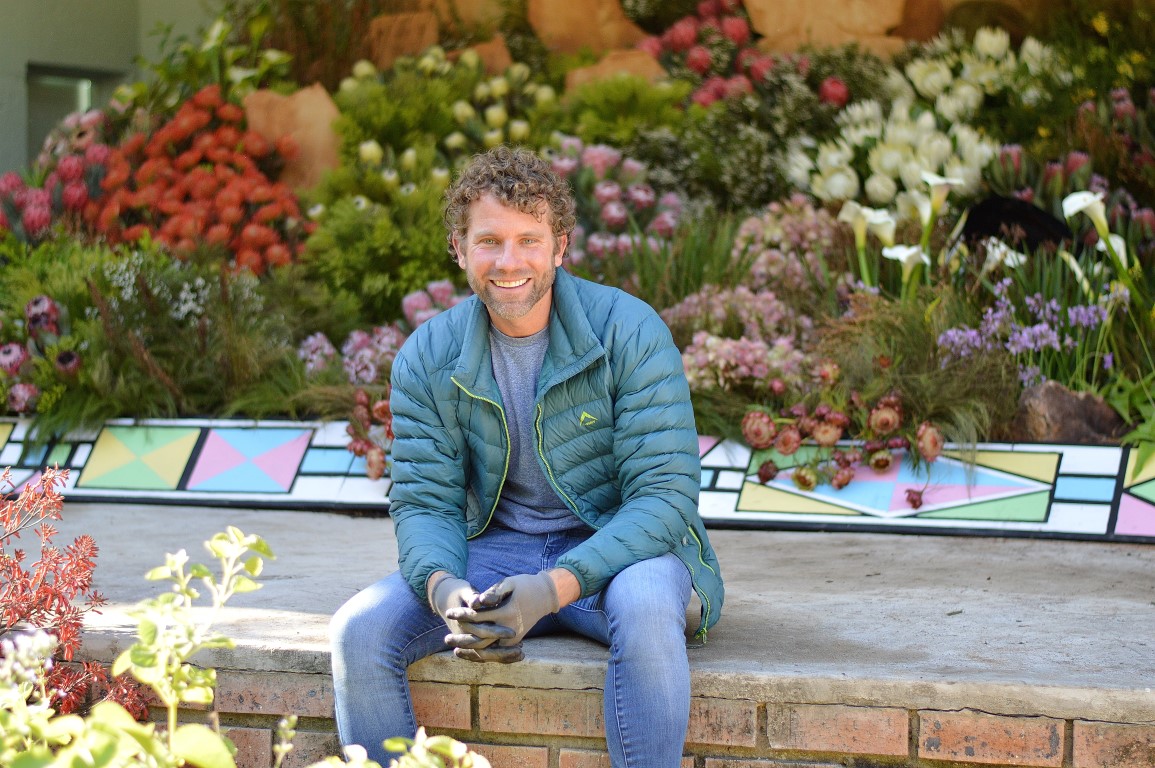
“The more exposure we get abroad and the more popular those flowers are, the greater the demand and scope for the industry back home to grow.
“There have also been developments in how the flowers are cultivated and we have found that those proteas harvested in their natural environments are far better than those grown in artificial climates.
“So there are projects for sustainable harvesting of proteas and this also creates jobs for local communities.
“Instead of turning uncultivated land into farmland, it is preserved so that the proteas can flourish and be harvested sustainably. Through that the bulbs that are dormant in the ground also get a chance to grow and the whole biodiversity is maintained.
“When we win gold we are also featured constantly on European television, so the exposure we get for our country is huge.”
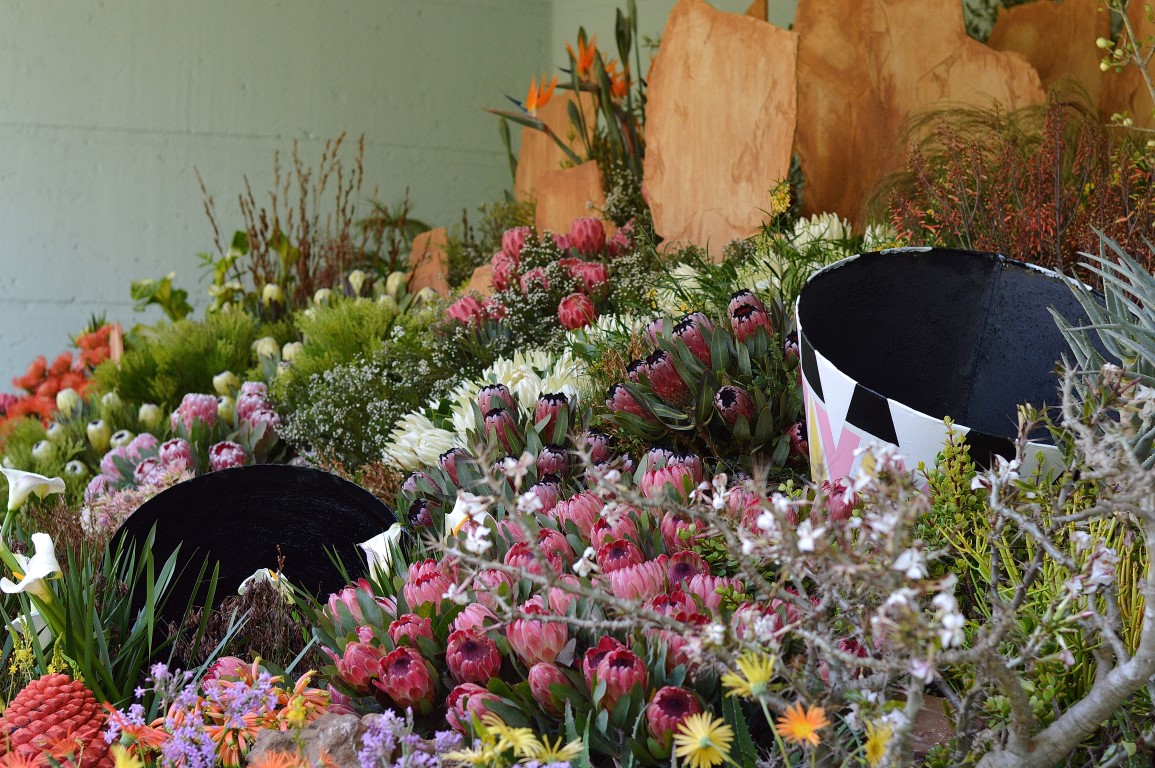
With such a deep love and appreciation for plants, Leon says finding flowers in their natural habitats is what really excites him.
“Some of the most memorable gardens I have seen are in China – there is nothing more thrilling than seeing something like a hydrangea that is sold commercially all over the world, growing in its natural environment.
“You see so much in China you have never seen before.
“But there are also so many amazing spots in South Africa as well where you find the most beautiful flora; from the world’s largest daisy in Port Elizabeth to miniature forests and minute flowers that grow in our arid landscapes.”
Details
[email protected]
Text: LINDI BOTHA. Photographer: BELINDA ERASMUS


